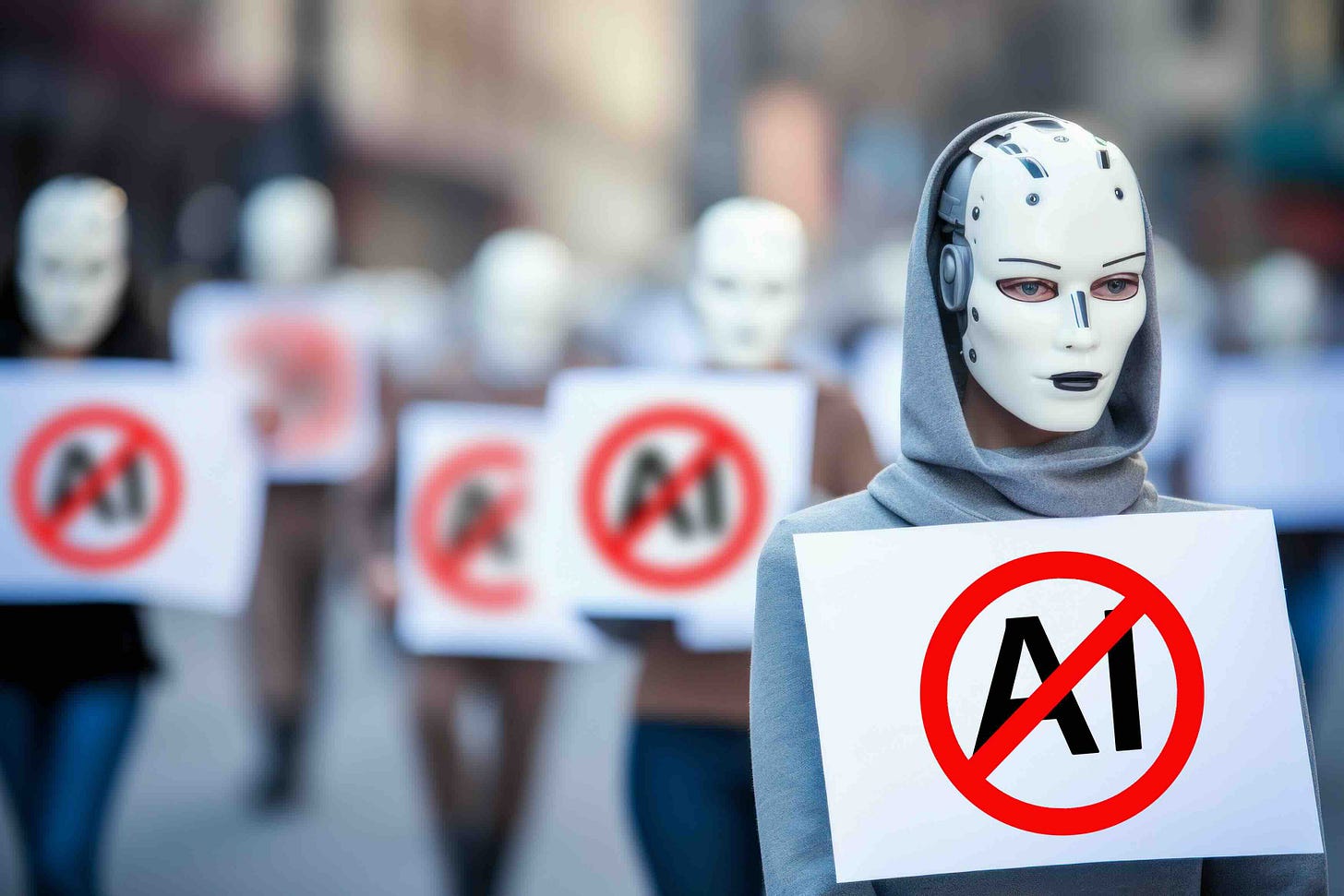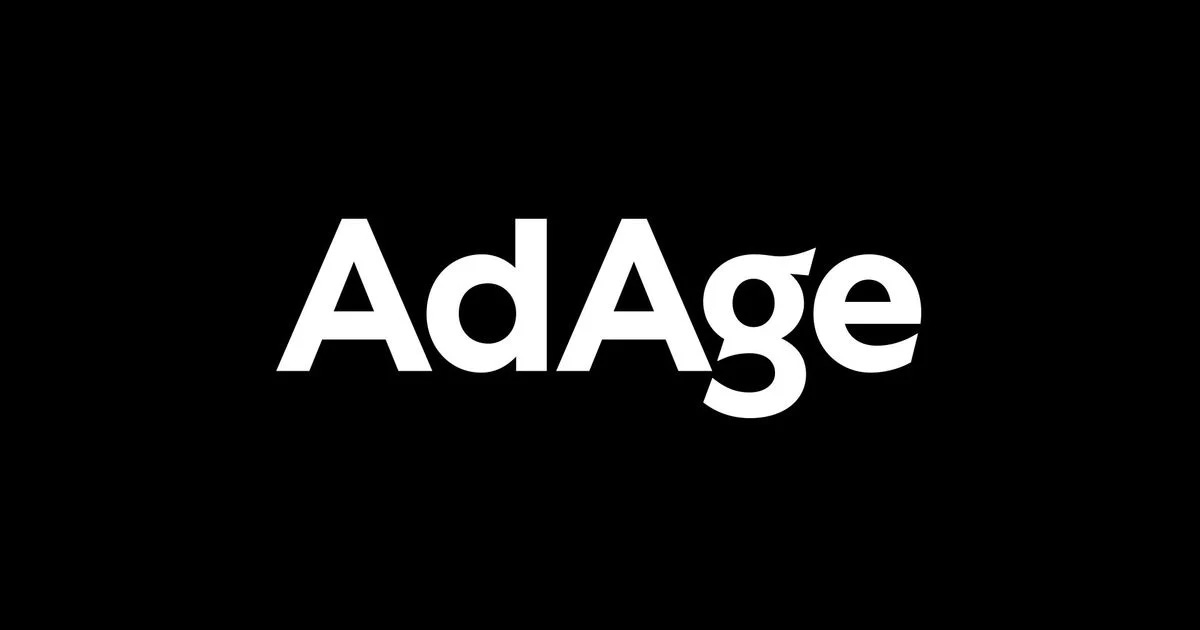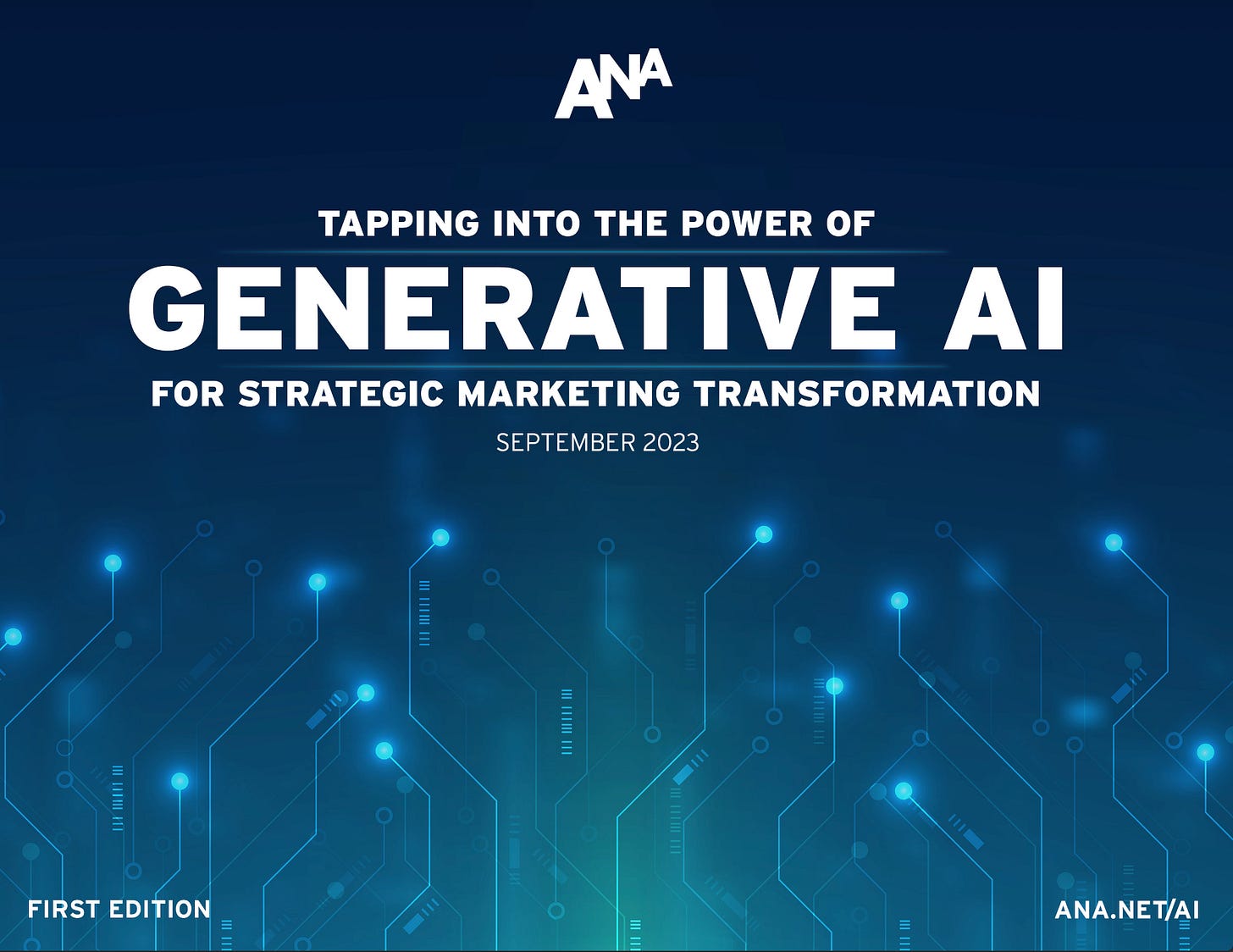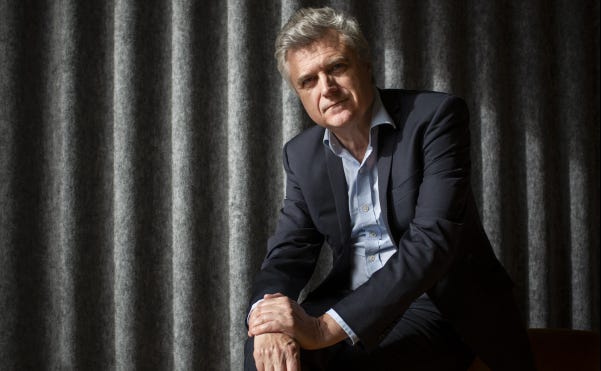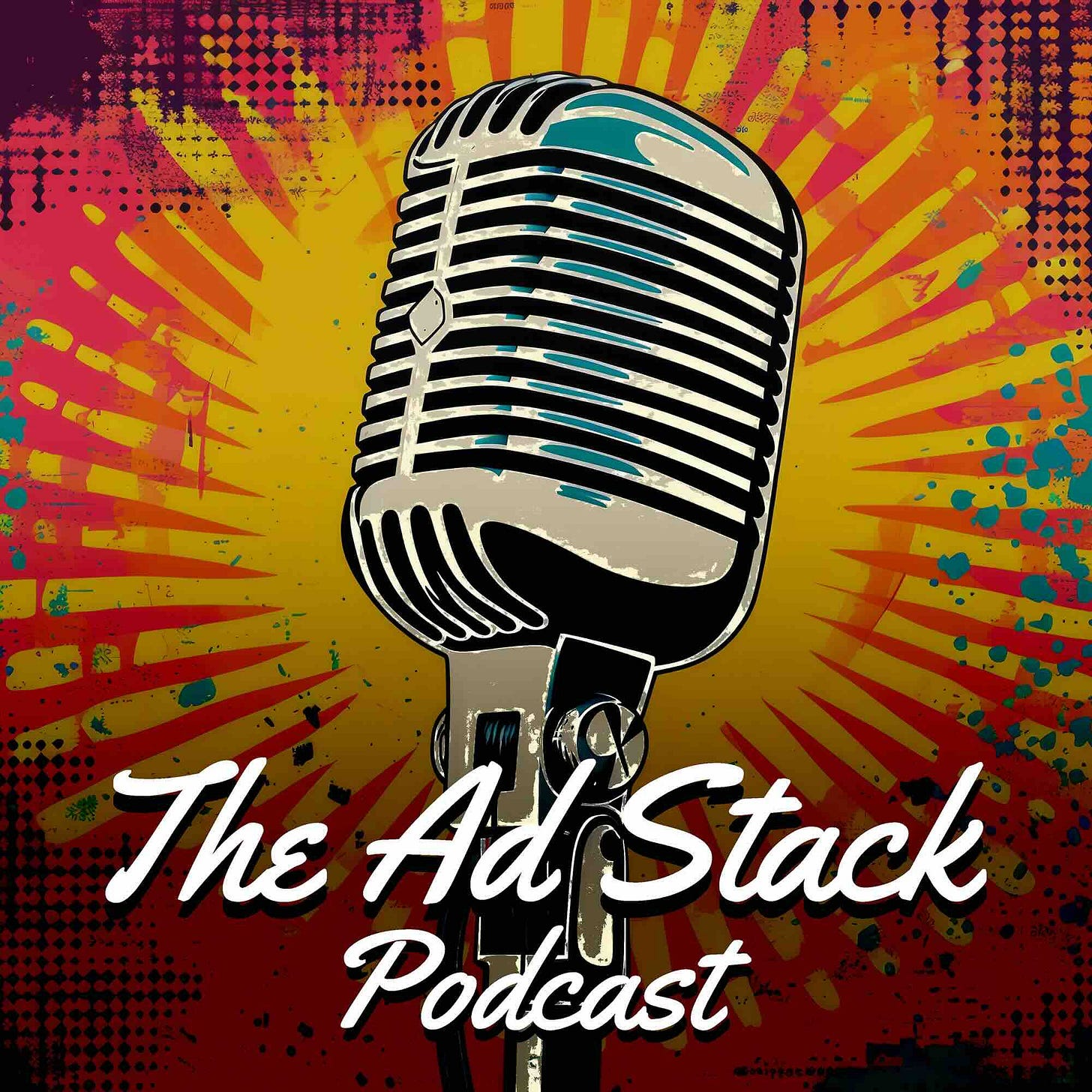The Empire Strikes Back!
Edition 14 - Brands are pushing back on agency use of A.I. And it began waaaaay before yesterday. Is this good for you? This is comprehensive; save it to read at a long status meeting.
Listen to the podcast here or on Spotify.
The Empire Strikes Back! Satire Returns.
Part 1. Blow back against AI is being fueled by an unlikely source - Brands.
Dealing with the fear of fewer people, smaller meetings, and lonelier times will compound the corporate emptiness wrought by those three days in-office work weeks that COVID left behind. Is the threat of fewer agency people in smaller meetings beginning to make brands feel a bit - lonely.
Perhaps. But new reporting suggests a different picture. In a recent study by Ad Age, “Brands add AI restrictions to agency contracts—behind the growing trend,” brands are now taking a strong P.O.V. regarding ad agency use of Artificial Intelligence in concepting, creating, and producing creative brand work.
“Brands add AI restrictions to agency contracts—behind the growing trend.”
Advertisers are placing more restrictions on their partners when it comes to AI in their work
Ad Age by Garett Sloane. Published on March 26, 2024.
"Recently, we won three new pieces of business and in the [master service agreement] it says, 'You're not allowed to use AI of any kind, without prior authorization,'" an anonymous ad agency CEO told Ad Age. "So, that even means they don't want us to use AI to help work on concepts, not just anything that goes out the door."
As reported by Ad Age (paywall alert), businesses are demanding stricter AI safeguards in contracts with ad agencies over concerns that generative AI could inadvertently incorporate other brands' creative work or use the businesses' intellectual property for training AI models. This clashes with ad agencies rapidly adopting AI technologies to streamline production processes.
It also puts a dent in my initial theory of corporate rejection, abandonment, and small, lonely meetings.
Brands are rightfully wary of using AI image generators due to potential copyright infringement issues. While some developers claim their tools are safe, others face legal challenges. Implementing a blanket ban may be simpler than determining which AI tools are permissible.
Brands are demanding stronger AI safeguards in their contracts with ad agencies, setting up tension between marketing firms, which are racing to adopt generative AI, and clients, who are worried about all of the ways the technology could steer them wrong.
Again read the Ad Age report here.
Part 2. ANA Guidance - AI usage and consent clauses.
The Ad Age report sheds light on the fact that these AI-related apprehensions are not a new phenomenon. It harked back to last year's revisions to the Association of National Advertisers' guidance for brands, which now recommends incorporating clauses regarding AI usage and consent into agreements with agencies.
Check out the ANA link. If you work in agency leadership (or aspire to) you should read these documents. Even if seen as remedial, at least it will give you a snap shot of how industry leaders will move forward with creative tech. Prodco’s - there are gobs of insights to guide you on wedge offerings you can target to fill gaps.
Evidently, companies are taking heed of ANA’s advice, as the Ad Age report suggests a growing trend of businesses incorporating such provisions into their contracts, aiming to navigate the uncharted waters of AI adoption while safeguarding their interests.
Part 3. Fall 2023. WPP shells out $317,000,000
By revenue, agency network WPP is the world’s largest advertising holding company. And they are beyond committed to AI.
Per Adweek (10/26/23), agency network WPP (2023 revenue 14.85 billion British pounds; 18.75 billion USD ) is set to double down on growing its artificial intelligence offerings, which will include an investment of $317 million (£250 million) this year (2024), but it won’t forget about its roots in creativity, CEO Mark Read said.
“Is AI friend or foe to the advertising industry? “
Strategies Magazine, Paris.
In an interview last Fall with Strategies Magazine, Paris, Mr. Read offered up a contrasting outlook of AI’s role in ad agency creative mojo as compared to how brand enthusiasm for AI can best be described as “guarded”.
AI is already fully integrated into our creative work. We also use it in many programs to manage our business, and we create platforms to put AI tools in the hands of creatives. In the longer term, we're considering the transformative impact of AI on our business, how it can reinvent the way we work.
Mr. Read continues …
Like in any disruption, some jobs will be disrupted, but we need to look at new jobs AI will create. Our best and brightest creatives are already turning to AI. They use it to bring their ideas to life more quickly, to assist them in their brainstorming sessions. I believe artificial intelligence provides solutions to this current conundrum: on one hand, our clients increasingly need content on platforms like Instagram, TikTok, Facebook, Amazon, and on the other hand, production costs are skyrocketing. With AI, we can produce high-quality content. It's a significant production opportunity for us.
Moreover, I believe that new jobs will be created. If you look carefully at the WPP group, you'll find jobs that didn't exist 20 or even 10 years ago, such as search engine managers, programmatic media managers ... I understand the concerns regarding job losses, but you know, we've gone through many waves of innovation in the last 150 years…
Part 4. Clients will be clients.
“Some advertisers prohibit agencies from using generative AI”
Strategies Magazine, Paris 10/3/23.
“We see a form of schizophrenia on some of our clients. On the one hand, they ask us to be at the forefront of innovation and creativity, in touch with these new creative technologies, and on the other hand they impose contractual amendments to ensure that we do not use AI projects”, said Vincent Reynaud Lacroze, general director of We Are Social agency.
We even had some customers who asked us for proof of film and photoshoots in order to be sure that AI had not been used”, added Vincent Reynaud Lacroze. It happens even when customers are on site during the production process...
Part 5. Generative AI is a tool. And not always the best.
Joseph Foley, in an article for Creative Bloq (April 4, 2024), offers a contrasting real world outlook.
I can see why brands are banning AI in their advertising.
It's too much of a risk.
We've been hearing a lot about how generative AI is revolutionising creative work, while potentially putting jobs in danger, but it seems that brands themselves are growing wary. While advertising agencies are reportedly keen to embrace the technology, some of their clients are not so convinced.

Brands have faced fierce backlash from customers over their use of AI-generated imagery. XBox drew criticism for employing “cheap AI art,” while Lego's AI-powered Ninjago quiz images left fans fuming.
Uber Eats ruffled feathers by showcasing bizarre, AI-invented dishes, irking both diners and restaurants. These instances serve as cautionary tales for companies venturing into the realm of artificial imagery without proper consideration for audience reception.
The backlash faced by brands like XBox, Lego, and Uber Eats has demonstrated that the use of AI-generated imagery can tarnish a brand's reputation.
Part 6. Well - What the heck can we do today?
First thing I would do is hire someone bright enough who can understand both the breadth and nuances of what you’re now dealing with. Someone like me. In the interim as you get the hiring req. approved, let’s look at my fine new logo for my planned Ad Stack companion podcast. I had some credits to burn with Adobe Stock so I did a stock search for an old microphone with a colorful background; illustration style.
I reviewed my options, made my selection, and did a double-take. This image was rendered by generative AI! Along with this came a license of usage rights. While I was expecting something pre-existing, what I actually received was insight into how the stock image industry will evolve short-term.
It appears Adobe came up with either a very simple, effective idea, or a scheme that smartly hides its complexities. There’s got to be an insurance policy (literally) of some sort for a worst case infringement issue.
The fail safe would be to train their A.I. language model on only images they have rights to, but which might be too small a selection set. So perhaps they make agreements with other stock houses to share imagery to ensure sufficient training for everyone.
BTW - just checked with Getty Images. Generative AI stock image as well. Am I the last to know? I’ll speak with someone there this week regarding licensing and liability.
Perhaps we’ll discuss open source solutions next time.
Summary
Brands and agencies are set on a collision course. This will not resolve soon. Most likely on a brand-by-brand basis. I find the argument of corrupted branding by AI to be a total cop-out. Using a closed system within the holding company will go a long way to solving this.
Regarding competing brands polluting other brand creative, agencies have dealt with brand conflicts for a very long time. Holding companies will need to firewall brands as usual.
Regarding brand creative polluting other brands, I’d say creatives should be using fresh brand vector art with each project (as the already do). That should help reset and train AI programs on the official brand guidelines.
I don’t mean to oversimplify concerns. I’m just typing fast because this conversation needs a Summary. As we move forward, I imagine AI tech will evolve to address some of these issues, versus conflating everything into a large vat of creative stew. Again, my example of brand conflicts; we need to work smartly and with purpose.
And establish brand rules and guideline at the agency level, versus across entire holding companies. Which holds true until we discuss holding company production departments. That might present an entirely different can of worms.
Feel free to share comments below. If you enjoyed this read, please smash the heart icon …
…at the top or bottom of the page so others can find this article. Re-stacking is great too.
Have a great week people!
-pb


